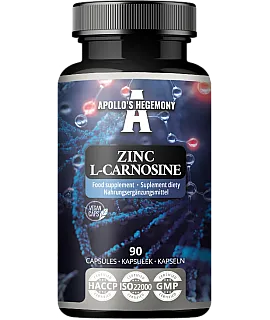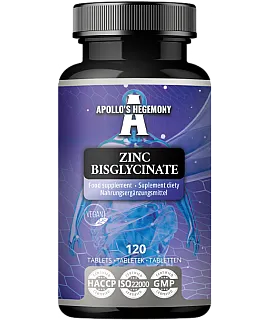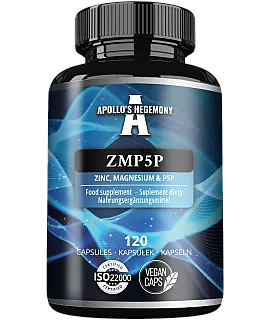Zinc and skin - what are the relationships?

The skin is our largest organ. Its condition defines not only the aesthetics of the body, but also the effectiveness of the barrier that separates our insides from the outside world. At the same time, it is the third tissue of the body containing the most zinc. The consequences of zinc deficiency for skin and hair health (difficult wound healing, inflammatory changes, hair loss, etc.) are well known, and on the other hand, we know a lot about the benefits of using zinc preparations both orally and epidermally. If you're concerned about skin health, it's essential to keep an eye on the proper supply of zinc in your diet. From this article you will learn exactly how zinc affects the skin. Read to the end!
- The effects of zinc on skin and hair health
- Zinc can be used internally and externally
- Zinc is an important antioxidant for the skin
- Enteropathic dermatitis due to zinc disorder
- Zinc and acne
- What zinc supplements should I use for skin health?
- Summary
The effects of zinc on skin and hair health
Zinc, both in its elemental form and its various salts, has been used for centuries as a therapeutic agent for the skin and its creations. Topical preparations such as zinc oxide, calamine or zinc pyrithione are used as photoprotectants, soothing agents or as an active ingredient in anti-dandruff shampoos. Over the years, its use has increased to help fight a number of dermatological conditions, including:
- infections (leishmaniasis, warts),
- inflammatory dermatoses (acne vulgaris, rosacea),
- pigmentary disorders (melasma),
- tumors (basal cell carcinoma).
Zinc is five to six times more concentrated in the epidermis than in the dermis. Zinc deficiency can cause skin deterioration, nail dystrophy, hair loss and slower wound healing. Its effect on immune system function means that a deficiency is also an open door to bacterial infections of the skin.
Zinc can be used internally and externally
It is one of those ingredients that have applications both as an oral dietary supplement for systemic action and as an ingredient in cosmetics applied topically to the skin. Such a treatment is used for many infectious or inflammatory skin ailments.
Zinc ointment is a popular product that is on the equipment of many Polish homes. It is used for a wide variety of skin problems from infancy, such as various types of flare-ups. In teenagers and adults, zinc ointment is often used, among other things, as part of the fight against acne.
Zinc is an important antioxidant for the skin
This element is an essential element of more than 200 metalloenzymes, including the antioxidant enzyme superoxide dismutase (SOD). It influences their compatibility, stability and activity.
Although zinc is not as famous an antioxidant as vitamins C and E, ample evidence points to zinc's significant antioxidant role. It has been noted that zinc applied topically in the form of divalent zinc ions provides antioxidant photoprotection of the skin (UV protection).
Two antioxidant mechanisms have been suggested for zinc:
- Zinc ions can replace active redox molecules, such as iron and copper, at critical sites in cell membranes and proteins;
- alternatively, zinc ions may induce the synthesis of metallothioneins, proteins rich in sulfhydryl groups that protect against free radicals.
The researchers note that topically applied zinc ions may provide important and helpful antioxidant protection for the skin.
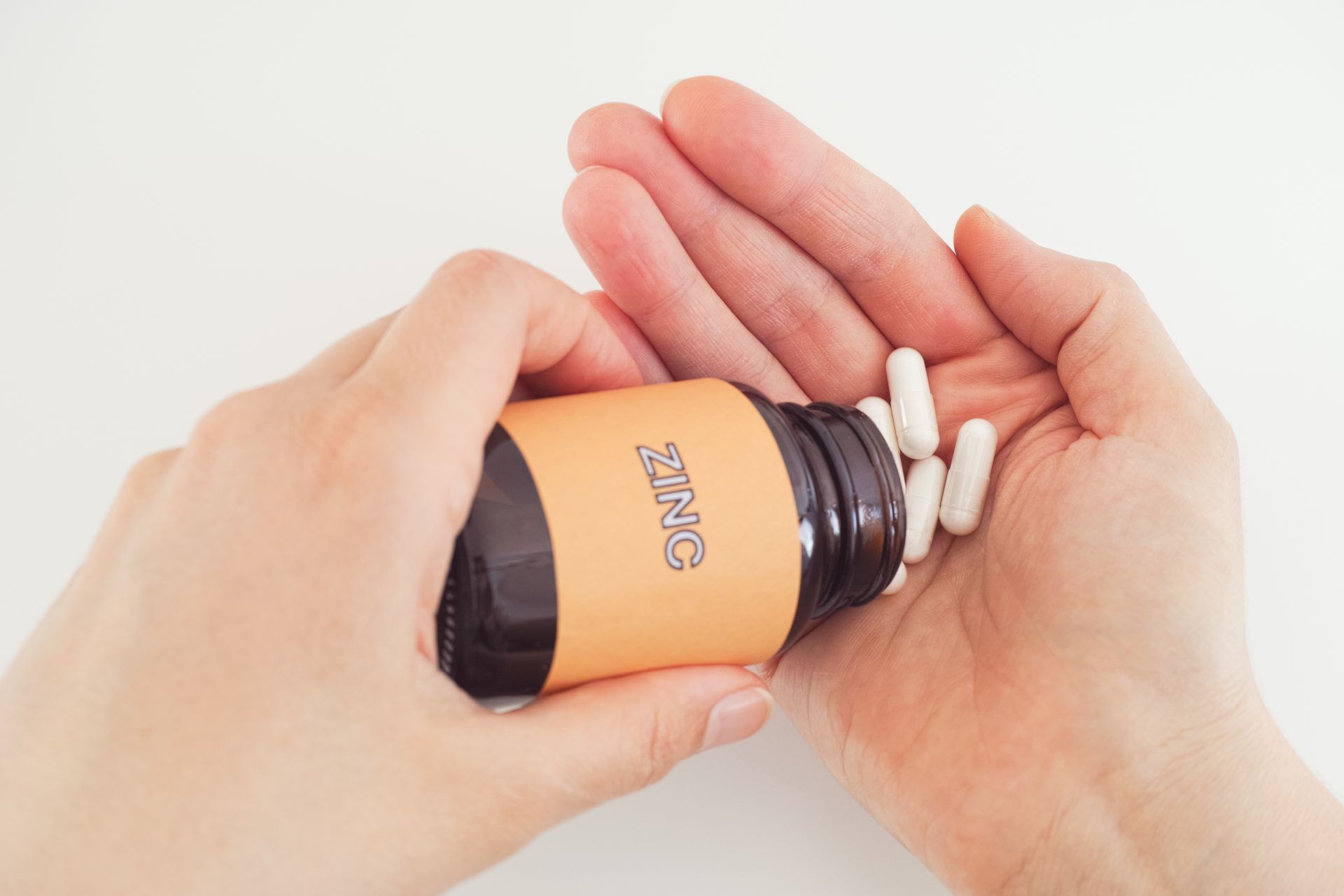
Enteropathic dermatitis due to zinc disorder
This is a genetic disorder caused by a mutation in the ZIP4 gene. Such a mutation impairs the absorption of zinc in the intestines, leading to severe zinc deficiency.
Characteristic symptoms are seen as early as infancy. The onset of symptoms is usually observed about 4-6 weeks after weaning, or even earlier in infants not fed breast milk. The infant becomes irritable, withdrawn and develops photophobia.
In untreated cases, anorexia, pica, growth abnormalities, hypogonadism, taste and smell disorders, night blindness and neuropsychiatric symptoms (mood changes, tremor, dysarthria and shaking) may occur. Skin lesions include periorbital and sacral dermatitis localized around the mouth, cheeks, ears, nostrils, buttocks, anus, dorsal skin of the hands, feet, toes and heels, atrophy, nail dystrophy and hair loss. Some lesions are burns, mucous or psoriatic in nature. Delayed wound healing, angular stomatitis, conjunctivitis, eyelid inflammation, increased susceptibility to infection and growth retardation can also be observed.
Symptoms mostly resolve with the introduction of chronic supplementation with high doses of zinc. In toddlers, high doses of zinc are used initially and then lower doses are maintained chronically until adulthood.
Enteropathic dermatitis(Acrodermatitis Enteropathica) is an affliction very often described in publications on zinc and its effects on health. The discovery of this disease and its subsequent analysis have contributed a lot to our general knowledge of zinc, its mechanisms of action and the dangers posed by severe zinc deficiency.
Zinc and acne
Acne vulgaris is the most common teenage disease, affecting up to 90-95% of the teenage population. The aesthetic problems that acne generates are particularly acute for teenagers and strongly affect their self-esteem. This generates a strong need to search for effective methods to alleviate acne symptoms. Analyses of the effectiveness of zinc preparations for various forms of acne are one of the most popular topics in zinc research.
The cause of acne development is an infection with the bacteria Propionibacterium Acnes. Zinc is a promising way to alleviate acne while aiming to reduce the possible side effects of antibiotics.
The exact mechanism of action of zinc in the treatment of acne remains poorly understood, and is thought to act directly on the inflammatory balance of microorganisms and facilitate the absorption of antibiotics when used in combination.
Zinc applied topically alone, as well as in combination with other agents, is effective probably because of its anti-inflammatory effects and its ability to reduce the number of P. Acnes by inhibiting P. Acnes lipases and free fatty acid levels. Another likely mechanism is the inhibition of sebum production through the anti-androgenic effect of zinc.
Both oral and topical use of zinc has shown efficacy against acne in clinical trials.
What zinc supplements should I use for skin health?
Zinc is good to use in parallel with copper so as not to upset the balance between the two elements. Copper has additional beneficial effects on hair and skin pigmentation and helps fight oxidative stress. There are not many preparations on the market that have this combination in one capsule, but a good example is the AH Z-Balance Q product. It contains 15 mg of zinc and 1 mg of copper, with the addition of the antioxidant quercetin and EGCG.
You can also reach for monopreparations for more targeted action. Zinc diglycinate, or zinc chelate, for example, does a good job.
Summary
Zinc is a very important component of the skin, which protects it from numerous infections and supports its regenerative processes. It influences the maintenance of better aesthetic and protective properties of the skin. A huge number of scientific publications show good effects of zinc supplementation in various types of skin problems, and both oral supplements, which have a systemic effect, and epidermally applied zinc cosmetics, which have a topical effect, are legitimate.
Sources:
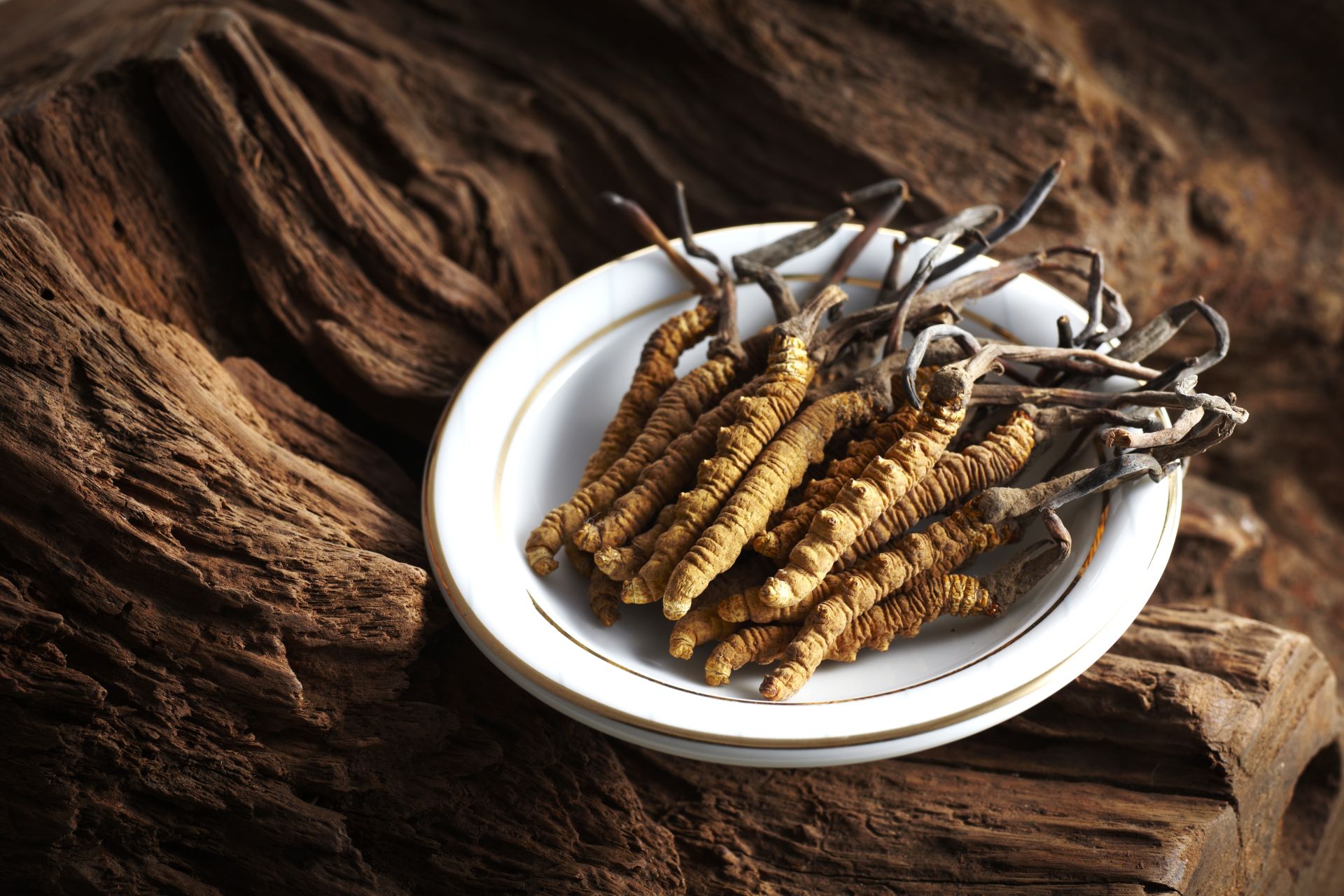 ⮜ Previous article
⮜ Previous article
Cordyceps sinensis - a vital mushroom with exceptional properties
 Next article ⮞
Next article ⮞
